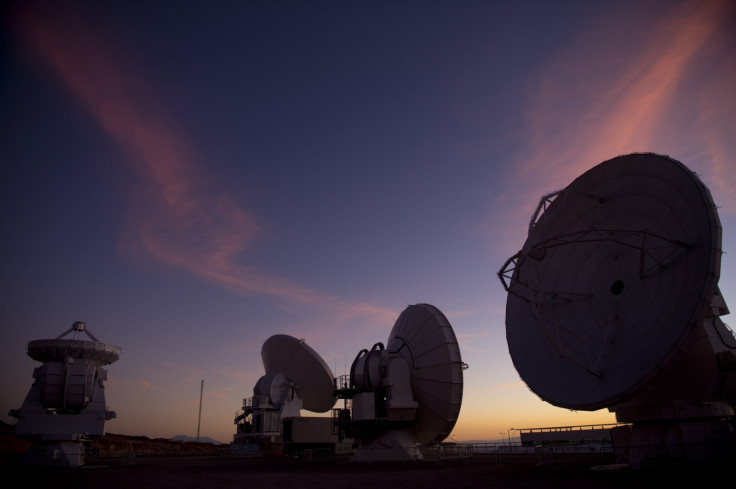Life on Earth: Milky Way Organic Molecule 'Iso-propyl Cyanide' Provides Clues to its Origins

Scientists have discovered an interstellar organic molecule at the centre of our galaxy, which reveals clues to the origins of life on Earth.
Iso-propyl cyanide, i-C3H7CN, was detected in a star-forming cloud around 27,000 light-years from Earth in the middle of Saggitarius B2, a gigantic molecular cloud of gas and dust.
The finding suggests that some of the fundamental ingredients for life as we know it could have originated in interstellar space.
For the study, astronomers from the Max Planck Institute for Radio Astronomy used the giant Atacama Large Millimeter/Submillimeter Array (Alma) Telescope in northern Chile. Scientists can detect specific molecules using radio telescopes because they emit light at a particular wavelength and spectrum.
The "branched" carbon structure of Iso-propyl cyanide differentiates the molecule from others in interstellar space. It is a characteristic central to amino acids, that are essential for life on Earth - known as the "building blocks of life".
"Amino acids are the building blocks of proteins, which are important ingredients of life on Earth," lead author of the study, Arnaud Belloche, told Space.com. "We are interested in the origin of amino acids in general and their distribution in our galaxy."
The researchers in this new study did not find amino acids, but their discovery is evidence that amino acids may have formed in an "interstellar medium", Belloche added.
When stars are born, they heat up microscopic dust grains. Chemical reactions on the surface of the dust allow complex molecules, such as i-propyl cyanide to form.
The idea that branched molecules could form on dust grains in interstellar space was first suggested in the 1980s, but this is the first time such molecules have been discovered.
According to the study, iso-propyl cyanide may have even been plentiful, which could mean branched molecules could be fairly ordinary in interstellar space.
"The detection of a molecule with a branched carbon backbone in interstellar space, in a region where stars are being formed, is interesting because it shows that interstellar chemistry is indeed capable of producing molecules with such a complex, branched structure," Belloche said.
Prof Matt Griffin, head of physics and astronomy at Cardiff University, told the BBC: "It's clearly very high-quality data - a very emphatic detection with multiple spectral signatures all seen together."
"There seems to be quite a lot of it, which would indicate that this more complex organic structure is possibly very common, maybe even the norm, when it comes to simple organic molecules in space," he added.
The research is detailed in the journal Science.
© Copyright IBTimes 2024. All rights reserved.






